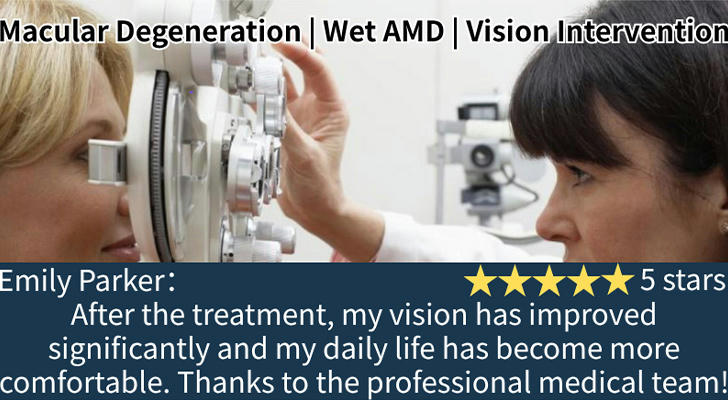👁️ Understanding, Preventing, and Treating Macular Degeneration: What You Need to Know
Macular Degeneration | Wet AMD | Ophthalmic Diagnosis | Vision Intervention | AREDS Nutrients

Age-related macular degeneration (AMD), commonly called “macular disease,” is a degenerative condition affecting the central vision area of the eye known as the macula. The macula converts light signals into clear central images and controls important visual functions like facial recognition, reading, and driving. This disease mostly affects people aged 50 and older and is a leading cause of vision loss among Americans over 60. Macular degeneration can affect one or both eyes with varying degrees of vision impairment.
I.Two Main Types of Macular Degeneration
1.Dry Macular Degeneration (Atrophic AMD)
The most common form, accounting for about 90% of cases.
Characterized by the buildup of protein and lipid deposits called drusen beneath the macula, causing it to thin and vision to slowly deteriorate.
Divided into early, intermediate, and advanced stages; advanced dry AMD leads to geographic atrophy, which is the loss of macular tissue.
2.Wet Macular Degeneration (Exudative AMD)
Accounts for 10% to 20% of cases but causes more rapid and severe vision loss.
Caused by abnormal growth of new blood vessels under the macula that leak blood and fluid, resulting in quick deterioration of central vision, with symptoms such as distorted vision and dark spots.
Without timely treatment, wet AMD can lead to severe vision loss or blindness.
II.Symptoms and Risk Factors
🔍 Common Symptoms:
Straight lines appear wavy or distorted
Dark or missing areas in the center of vision
Blurred vision and difficulty recognizing details
Colors appear faded or dull
⚠️ High-Risk Groups:
Age 50 and above
Family history of AMD
Smokers
Individuals with obesity, high blood pressure, or high cholesterol
Diets high in saturated fat
Caucasians have a higher predisposition
III.Diagnostic Testing
🧑⚕️ Diagnosis is confirmed by ophthalmologists through:
Slit-lamp examination and dilated retinal exam
Amsler grid test (a home test to monitor for distortion or blind spots)
Imaging studies including:
Optical coherence tomography (OCT)
Fluorescein angiography (FA), involving fluorescent dye injection to visualize retinal blood vessels
IV.Treatment and Management
💊 Managing Dry AMD
No cure, but progression can be slowed by taking AREDS/AREDS2 antioxidant supplements containing vitamins C and E, zinc, copper, lutein, and zeaxanthin
Lifestyle improvements: quitting smoking, balanced diet, blood pressure control, and regular exercise
💉 Treatment for Wet AMD
Mainly involves injections of anti-vascular endothelial growth factor (anti-VEGF) drugs to inhibit abnormal blood vessel growth and prevent rapid vision loss
Laser therapy or photodynamic therapy (PDT) may be considered in some cases
V.How to Effectively Prevent Macular Degeneration
⚖️ Prevention focuses on:
Avoiding smoking to reduce risk
Maintaining a healthy diet rich in antioxidants from fruits and vegetables
Having regular eye exams, especially if aged 50 or older
Managing chronic conditions like hypertension and high cholesterol
Protecting eyes from prolonged exposure to bright light
VI.Vision Care Focus for People Over 40
👁️🗨️ Ages 40–49: Start Paying Attention
Minor vision changes like slight blurriness or dryness
Establish routine eye exams to catch early signs
👓 Ages 50–59: Key Period for Prevention and Early Screening
May notice visual distortions or dark spots
Begin supplementation with AREDS nutrients for protection
🧐 Ages 60–69: Intensify Monitoring and Timely Treatment
Close monitoring for dry or wet AMD symptoms
Early intervention is crucial
🧓 Ages 70 and Older: Focus on Comprehensive Care
Integrate overall health management with vision care
Combine with low vision rehabilitation to improve quality of life
VII.Summary
Macular degeneration is a major threat to vision health among middle-aged and elderly adults. Early detection, standardized treatment, and scientific prevention are vital to slow disease progression and preserve eyesight. People over 40 should prioritize eye health by regular checkups, lifestyle adjustments, and following medical advice to maintain clear vision and life quality.
